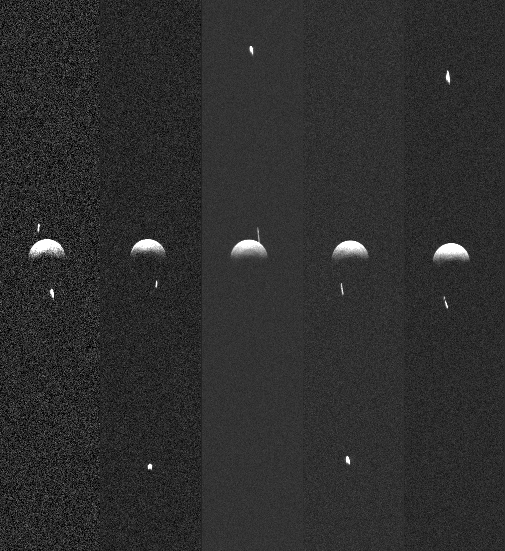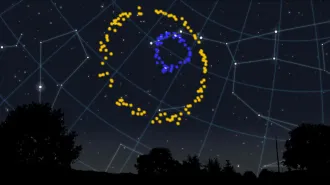Normal 0 false false false MicrosoftInternetExplorer4
For radio astronomers seeking a detailed study of a near-Earth asteroid, last February proved a perfect opportunity. The large rock known as 2001 SN263 remained in the field of view of the giant radio dish at Arecibo Observatory in Puerto Rico for long periods during the asteroid’s 16-day sojourn near Earth. Arecibo astronomers Mike Nolan, Ellen Howell and their colleagues got hours of observing time.

To their surprise, they found that 2001 SN263 isn’t one rock, but three — the first triple system discovered among near-Earth asteroids. The largest chunk has a diameter of about 2 kilometers while two smaller fragments that orbit the main body are 1 km and 400 meters in diameter, Nolan reported July 17 at the Asteroids, Comets, Meteors meeting in Baltimore.
With only one example, “we don’t know how common triple or other multiple systems are and if they are similar or different in their formation,” says Howell. In attempting to divert a near-Earth asteroid that might hit Earth, it would be important to know which rocks have partners, Nolan notes. “You would need to make sure you pushed all the components aside, not just the primary,” he says.
Astronomers have previously identified about 30 binary near-Earth asteroids. Nolan suspects that many of these binaries, as well as the new-found triple, could have formed in a similar manner. When sunlight strikes a near-Earth object that isn’t perfectly spherical, the uneven heating of the surface causes the body to spin up. If the object spins too fast, it breaks apart and can sometimes form stable satellites that orbit the main body.
Although binaries and triples have been found farther out, in the main asteroid belt between the orbits of Mars and Jupiter, as well as in the Kuiper Belt of frozen bodies beyond Pluto, these objects probably didn’t fragment in the same way, Nolan suggests, because the intensity of sunlight striking these bodies is much more feeble.







